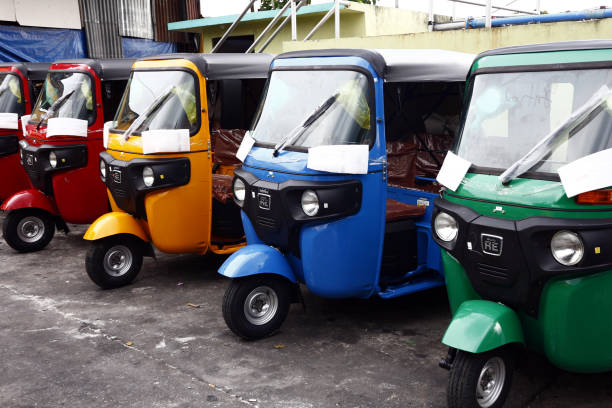Bajaj Auto, a dominant force in the two-wheeler and three-wheeler market, constantly attracts attention regarding its potential plans to enter the four-wheeler vehicle industry. Can it succeed? The recent market trends, technological advancements, and strategic shifts within the company make it a relevant question. In this blog, we will explore the past attempts and prospects of Bajaj Auto’s entry into the 4-wheeler market.
A Legacy Built on Two and Three Wheels
Bajaj Auto started its operations in India after India gained independence by first importing scooters, and later it manufactured Vespa scooters under license in India.
Over the years, the company has built a dominant position in two-wheeler production by creating market-leading products like Chetak, Pulsar, and Platina. The entry into three-wheeler manufacturing reinforced Bajaj Auto’s dominance within urban and semi-urban transportation.
The success of Bajaj Auto in automobile stocks stems from its four key pillars, which include its strong brand recognition, competitive costs, vast network reach, and detailed market understanding of India. As of April 2025, Bajaj Auto share price stood at Rs. 8000+.
Bajaj Auto Past Attempts and Recent Strategic Shifts
While Bajaj Auto has been a dominant force in the two and three-wheeler space, the allure of the much larger and more lucrative four-wheeler market has been evident in their past endeavors.
The ULC Dream (2008)
The most significant endeavor undertaken by Bajaj Auto for their entry in the 4-wheeler market was the ULC car project, which they launched in collaboration with Renault and Nissan in 2008.
The project was aimed at creating a budget-driven car that would compete directly with the Tata Nano. The plans for the ambitious project ended when Renault-Nissan and Bajaj had differences and could not agree on cost structure and product strategy.
Bajaj demanded an exceptionally inexpensive price point for their project, but Renault-Nissan experienced difficulty reaching this level since it required sacrificing both profit margins and product quality, which ultimately led to the failure of this project.
Focus on Quadricycles (Qute)
After the ULC setback, Bajaj shifted its focus towards a new vehicle category – the quadricycle. The Bajaj Qute, a lightweight four-wheeled vehicle, was positioned as a safer and more comfortable alternative to three-wheelers for intra-city transportation.
While the Qute has seen some success in export markets and limited adoption in India for commercial purposes, it hasn’t quite filled the void of a full-fledged passenger car in Bajaj’s portfolio.
Strategic Partnerships and Electric Mobility
In recent years, Bajaj Auto has been actively exploring partnerships and investing heavily in electric mobility. Their electric scooter, Chetak Electric, has garnered positive reviews, signaling their intent to be a significant player in the evolving EV landscape.
This focus on EVs could potentially be a stepping stone or an alternative route towards their four-wheeler ambitions.
Bajaj Auto’s Strategic Advantages for 4-Wheeler Market Expansion
Here are a few advantages that Bajaj Auto can get due to its past experience.
Strong R&D and Innovation Capacity
Bajaj invests heavily in research and development, focusing on fuel efficiency and electric mobility technologies, setting the stage for rapid four-wheeler product development.
Global Market Reach
With an established distribution and export network in over 70 countries, Bajaj has a ready platform for launching affordable four-wheelers to emerging markets where demand for cost-effective mobility solutions is growing.
Partnerships and Collaborations
Existing successful partnerships with global brands KTM and Triumph demonstrate Bajaj’s ability to leverage external expertise and technology collaborations—a strategic advantage for entering new vehicle segments.
Experience in Quadricycles and E-Rickshaws
Production and sales experience with lightweight vehicles like the Qute and upcoming e-rickshaw launches provide operational insights and infrastructure foundations for scaling into four-wheelers.
Conclusion
Bajaj Auto’s historical dominance in two- and three-wheelers is well established, and the company is strategically maneuvering to diversify its portfolio. The question of whether four-wheelers are on its horizon is met with a strong affirmative based on recent initiatives, partnerships, and market analyses.
While challenges remain, the expanding four-wheeler and electric vehicle markets present lucrative opportunities fitting Bajaj’s expertise in affordable, efficient mobility solutions.
For investors and industry watchers, Bajaj Auto’s transition into four-wheelers marks an exciting evolution, signaling a blend of legacy strength and innovative expansion in India’s automotive future.

